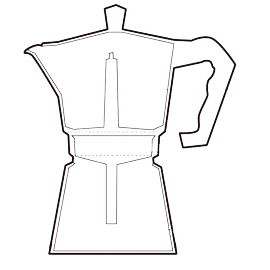Chapter 4 - Chapter summary
Output
Read the official PHP Manual
Anatomy of a simple database table
- Name
- must be unique
- must contain only alphanumeric characters or underscores. No Spaces!
- must be less than 64 bytes in length
- treat names as if they were case sensitive
- Columns (Attributes)
- Set column data type
- Restrict the size or length of data to accept
- Set any default value if needed (not applicable to the TEXT data type)
- If field is numeric indicate if you will accept only non-negative values (UNSIGNED).
- Identify any fields that are required (NOT NULL or NULL).
- Set table's Primary Key - must be a unique identifier for that row.
- Rows (Record)
MySQL Data Types
Text
- CHAR[Length] A fixed-length field from 0 to 255 characters long
- VARCHAR[Length] A variable-length field from 0 to 65,535 characters long
- TINYTEXT A string with a maximum length of 255 characters
- TEXT A string with a maximum length of 65,535 characters
- MEDIUMTEXT A string with a maximum length of 16,777,215 characters
- LONGTEXT A string with a maximum length of 4,294,967,295 characters
Numeric
- TINYINT[Length] 1 byte Range of –128 to 127 or 0 to 255 unsigned
- SMALLINT[Length] 2 bytes Range of –32,768 to 32,767 or 0 to 65,535 unsigned
- MEDIUMINT[Length] 3 bytes Range of –8,388,608 to 8,388,607 or 0 to 16,777,215 unsigned
- INT[Length] 4 bytes Range of –2,147,483,648 to 2,147,483,647 or 0 to 4,294,967,295
- BIGINT[Length] 8 bytes Range of –9,223,372,036,854,775,808 to 9,223,372,036,854,775,807 or 0 to 18,446,744,073,709,551,615 unsigned
- FLOAT[Length, Decimals] 4 bytes A small number with a floating decimal point
- DOUBLE[Length, Decimals] 8 bytes A large number with a floating decimal point
- DECIMAL[Length, Decimals] Length + 1 or 2 bytes A DOUBLE stored as a string, allowing for a fixed decimal point
Date and time
- DATE 3 bytes In the format of YYYY-MM-DD
- DATETIME 8 bytes In the format of YYYY-MM-DD HH:MM:SS
- TIMESTAMP 4 bytes In the format of YYYYMMDDHHMMSS - acceptable range starts in 1970 and ends in the year 2038
- TIME 3 bytes In the format of HH:MM:SS
Binary Data
- BINARY
- VARBINARY
- TINYBLOB
- MEDIUMBLOB
- LONGBLOB
Other
- ENUM Short for enumeration, which means that each column can have one of several possible values
- SET Like ENUM except that each column can have more than one of several possible values
- BOOLEAN A TINYINT(1) field that is either 1(true) or 0(false)
Accessing MySQL
- MySQL CLient - runs through the command line interface. To connect to a remote host - must use an ssh tunnel with proper username and password set.
- PHPMYADMIN - accessible through your web host login portal. Software that comes with the MySQL Server package. Provides a GUI for database interaction.
- MySQL Workbench - nice interface downloadable from mysql.com for interacting with multiple database connections and designing databases from the ground up.
Source
<a target="_blank" href="http://dev.mysql.com/doc/refman/5.5/en/index.html" title="MySQL Manual for version 5.5">Read the official PHP Manual</a> <h3>Anatomy of a simple database table</h3> <ul> <li>Name <ul> <li>must be unique</li> <li>must contain only alphanumeric characters or underscores. No Spaces!</li> <li>must be less than 64 bytes in length</li> <li>treat names as if they were case sensitive</li> </ul> </li> <li>Columns (Attributes) <ul> <li>Set column data type</a></li> <li>Restrict the size or length of data to accept</li> <li>Set any default value if needed (not applicable to the TEXT data type)</li> <li>If field is numeric indicate if you will accept only non-negative values (UNSIGNED).</li> <li>Identify any fields that are required (NOT NULL or NULL).</li> <li>Set table's Primary Key - must be a unique identifier for that row.</li> </ul> </li> <li>Rows (Record) <ul> <li></li> </ul> </li> </ul> <h3>MySQL Data Types</h3> <ul> <li><h4>Text</h4> <ul> <li><b>CHAR[Length]</b> A fixed-length field from 0 to 255 characters long</li> <li><b>VARCHAR[Length]</b> A variable-length field from 0 to 65,535 characters long</li> <li><b>TINYTEXT</b> A string with a maximum length of 255 characters</li> <li><b>TEXT</b> A string with a maximum length of 65,535 characters</li> <li><b>MEDIUMTEXT</b> A string with a maximum length of 16,777,215 characters </li> <li><b>LONGTEXT</b> A string with a maximum length of 4,294,967,295 characters</li> </ul> </li> <li><h4>Numeric</h4> <ul> <li><b>TINYINT[Length]</b> 1 byte Range of –128 to 127 or 0 to 255 unsigned</li> <li><b>SMALLINT[Length]</b> 2 bytes Range of –32,768 to 32,767 or 0 to 65,535 unsigned</li> <li><b>MEDIUMINT[Length]</b> 3 bytes Range of –8,388,608 to 8,388,607 or 0 to 16,777,215 unsigned</li> <li><b>INT[Length]</b> 4 bytes Range of –2,147,483,648 to 2,147,483,647 or 0 to 4,294,967,295</li> <li><b>BIGINT[Length]</b> 8 bytes Range of –9,223,372,036,854,775,808 to 9,223,372,036,854,775,807 or 0 to 18,446,744,073,709,551,615 unsigned</li> <li><b>FLOAT[Length, Decimals]</b> 4 bytes A small number with a floating decimal point</li> <li><b>DOUBLE[Length, Decimals]</b> 8 bytes A large number with a floating decimal point </li> <li><b>DECIMAL[Length, Decimals]</b> Length + 1 or 2 bytes A DOUBLE stored as a string, allowing for a fixed decimal point</li> </ul> </li> <li><h4>Date and time</h4> <ul> <li><b>DATE</b> 3 bytes In the format of YYYY-MM-DD</li> <li><b>DATETIME</b> 8 bytes In the format of YYYY-MM-DD HH:MM:SS</li> <li><b>TIMESTAMP</b> 4 bytes In the format of YYYYMMDDHHMMSS - acceptable range starts in 1970 and ends in the year 2038</li> <li><b>TIME</b> 3 bytes In the format of HH:MM:SS</li> </ul> </li> <li><h4>Binary Data</h4> <ul> <li>BINARY</li> <li>VARBINARY</li> <li>TINYBLOB</li> <li>MEDIUMBLOB</li> <li>LONGBLOB</li> </ul> </li> <li><h4>Other</h4> <ul> <li><b>ENUM</b> Short for enumeration, which means that each column can have one of several possible values</li> <li><b>SET</b> Like ENUM except that each column can have more than one of several possible values</li> <li><b>BOOLEAN</b> A TINYINT(1) field that is either 1(true) or 0(false)</li> </ul> </li> </ul> <h3>Accessing MySQL</h3> <ol> <li>MySQL CLient - runs through the command line interface. To connect to a remote host - must use an ssh tunnel with proper username and password set. </li> <li>PHPMYADMIN - accessible through your web host login portal. Software that comes with the MySQL Server package. Provides a GUI for database interaction. </li> <li>MySQL Workbench - nice interface downloadable from mysql.com for interacting with multiple database connections and designing databases from the ground up. </li> </ol>

 Exercises from the book
Exercises from the book